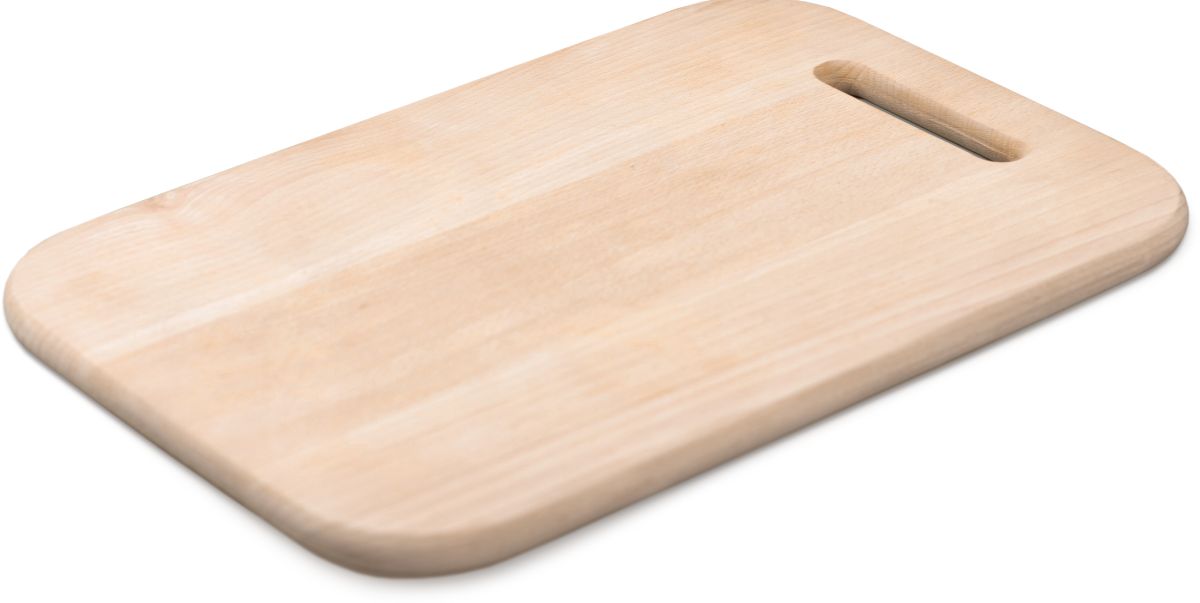Yes, Alder is good for cutting boards due to its durability and natural resistance to moisture and bacteria. Alder is a popular choice for cutting boards because of its strong and stable characteristics.
Its durability ensures that it can withstand heavy chopping and slicing, while its natural resistance to moisture and bacteria makes it safe and hygienic for food preparation. Alder’s light-colored wood grain also adds beauty and elegance to any kitchen. Whether you’re a professional chef or a home cook, using an Alder cutting board will provide you with a reliable and long-lasting surface for all your cutting needs.
The Unique Qualities Of Alder
Alder is prized for its unique qualities, which make it an excellent choice for cutting boards. Its fine texture, resistance to moisture, and natural antibacterial properties make it ideal for food preparation. Alder also boasts a beautiful, light color that adds a touch of elegance to any kitchen.
Durable And Hardwearing
Alder is well-known for its durability and ability to withstand heavy usage. It is a hardwood that boasts a solid and sturdy structure, making it a popular choice for cutting boards. The dense nature of alder ensures that it can handle the sharp blades of knives without easily scratching or denting. This means that your alder cutting board will remain in excellent condition for years to come.
Not only is alder durable, but it is also hardwearing. It has high resistance to wear and tear, making it ideal for daily use in the kitchen. With regular maintenance and care, an alder cutting board can withstand the rigors of chopping, slicing, and dicing, without showing signs of damage. Whether you are a professional chef or a home cook, you can rely on the durability and hardwearing nature of alder to provide a long-lasting cutting board.
Natural Resistance To Decay
One of the unique qualities of alder is its natural resistance to decay. This makes it an excellent choice for a cutting board, as it can withstand exposure to moisture and humidity in the kitchen environment. Unlike other types of wood that may warp or rot when constantly in contact with water, alder remains structurally intact.
The natural resistance to decay in alder cutting boards is due to the presence of extractives and resins in the wood. These natural substances act as protective agents, preventing the growth of bacteria and fungi that can cause decay and unpleasant odors. With an alder cutting board, you can have peace of mind knowing that your food preparation surface is hygienic and safe to use.

Advantages For Cutting Boards
When it comes to choosing a material for your cutting board, you want something that offers both durability and safety. Alder wood is an excellent choice for cutting boards due to its numerous advantages. In this article, we will explore the benefits of using alder wood for cutting boards.
Safe For Food Use
Alder wood is considered safe for food use, making it a great option for cutting boards. It doesn’t release harmful chemicals or toxins into your food, ensuring the safety of your meals. This is especially important when dealing with raw meat and other perishable food items.
Gentle On Knife Blades
Alder wood is known for its gentle nature, making it ideal for preserving the quality of your knife blades. Unlike harder surfaces like glass or stone, alder wood is kinder to your knives, reducing the risk of dulling or damaging the blades. This means your knives will stay sharper for longer, making your cutting tasks more efficient.
In addition, the softness of alder wood also helps to prevent deep cuts and scratches on the cutting surface. This ensures that your cutting board stays in good condition and maintains its cleanliness for longer periods.
Moreover, the natural fibers present in alder wood have a self-healing property that further minimizes damage caused by knife cuts. This allows the cutting board to maintain its smooth, even surface even after repeated use.
In conclusion, if you’re looking for a safe and durable material for your cutting board, alder wood is a fantastic choice. Its food-safe nature and gentle surface make it ideal for preserving the quality of both your food and your knives. Say goodbye to dull blades and food contamination with an alder wood cutting board.
Maintaining Alder Cutting Boards
Maintaining alder cutting boards is essential to prolong their lifespan. Alder is a great choice for cutting boards due to its durability, resistance to moisture, and natural antimicrobial properties. Regular cleaning, oiling, and avoiding excessive exposure to heat are key to preserving the beauty and functionality of alder cutting boards.
Cleaning And Sanitizing
Alder cutting boards are relatively low-maintenance, but proper cleaning and sanitizing are essential to keep them in top condition. After each use, wash the cutting board with warm, soapy water and a non-abrasive sponge. Avoid soaking the board or putting it in the dishwasher to prevent warping.
Once it’s washed, dry the cutting board with a clean towel and allow it to air dry upright to prevent moisture from accumulating on the surface. To sanitize, apply a solution of equal parts water and white vinegar and let it sit for a few minutes before wiping it away.
Preventing Warping And Cracking
To prevent warping and cracking, it’s crucial to avoid exposing the alder cutting board to extreme temperature and moisture fluctuations. Store the board in a dry, well-ventilated area, and avoid direct sunlight and heat sources.
Regularly conditioning the cutting board with food-safe mineral oil helps maintain its moisture balance and prevents cracking. Apply a thin layer of mineral oil over the surface and allow it to penetrate for a few hours or overnight before wiping away any excess oil.
Comparison With Other Wood Types
Alder vs. Maple Cutting Boards
When it comes to choosing the right wood for your cutting board, alder and maple are two popular options. Both kinds of wood have unique characteristics that make them suitable for this purpose.
Alder wood, known for its light color and straight-grain patterns, offers an appealing aesthetic to your kitchen. Its medium density provides a balance between hardness and gentleness, making it ideal for cutting boards. Alder is durable enough to withstand heavy chopping and slicing, yet soft enough to minimize damage to your knives.
On the other hand, maple wood is favored for its hardness and durability. Maple cutting boards are resistant to cuts and scratches, providing a sturdy surface for all your food preparation needs. The tight-grain structure of maple wood makes it less prone to absorbing moisture, reducing the risk of warping or cracking over time.
While both alder and maple have their advantages, it ultimately depends on your personal preferences and needs. If you value a lighter color and natural aesthetic, alder may be the better choice. However, if you prioritize durability and longevity, maple is a reliable option.
When comparing alder and bamboo cutting boards, the primary difference lies in the material used. While alder is a hardwood, bamboo is technically a grass. Despite this distinction, bamboo cutting boards have gained popularity in recent years due to their unique properties.
| Alder Cutting Boards | Bamboo Cutting Boards |
|---|---|
| Alder is a hardwood with medium density. | Bamboo is a grass with a high tensile strength. |
| Alder offers an appealing aesthetic with light color and straight grain patterns. | Bamboo has a natural light tan or yellowish color with distinctive patterns. |
| Alder cutting boards are durable and gentle on knives. | Bamboo cutting boards are known for their hardness and resistance to knife marks. |
| Alder is susceptible to moisture absorption and may require regular maintenance. | Bamboo has a natural resistance to moisture and is less likely to warp or crack. |
In terms of sustainability, bamboo cutting boards have an edge over alder as bamboo is a fast-growing and renewable resource.
Ultimately, when choosing between alder and bamboo cutting boards, consider factors such as aesthetics, durability, and sustainability to find the best fit for your kitchen.
Environmental Impact And Sustainability
In this section, we will delve into the environmental impact and sustainability of using alder wood for cutting boards. Understanding the renewability of alder wood and its impact on forest ecosystems is crucial in making an informed choice for an eco-friendly and sustainable kitchen accessory.
Renewability Of Alder Wood
Alder wood, with its fast growth rate, makes it a highly renewable resource for manufacturing cutting boards. This hardwood species can be sustainably harvested and replanted, ensuring a continuous supply for future generations. The quick regeneration allows alder forests to replenish themselves rapidly, making it a sustainable option for eco-conscious consumers.
Impact On Forest Ecosystems
When it comes to the impact on forest ecosystems, alder wood is considered environmentally friendly. Unlike other wood species, alder can thrive even in poor soil conditions, reducing the need for extensive land clearing or deforestation. Its ability to fix nitrogen in the soil enriches the ecosystem, promoting the healthy growth of other plant species and enhancing biodiversity.
Additionally, alder wood is often sourced from certified sustainable forests where responsible forestry practices are employed. These practices include selective logging and replanting, minimizing the ecological impact, and preserving the natural habitat of woodland creatures.
In conclusion, alder wood cutting boards offer an eco-conscious choice that prioritizes sustainability without compromising on functionality or durability.
Frequently Asked Questions On Is Alder Good For Cutting Boards
Is Alder Food Safe?
Yes, Alder wood is safe for food consumption. It is commonly used in smoking and grilling due to its mild and sweet flavor. Alder is known to enhance the taste of fish, poultry, and various meats. It is a popular choice among chefs and home cooks alike.
What Is The Best Wood For Cutting Boards?
The best wood for cutting boards is hardwoods like maple, walnut, and cherry. These woods are durable, dense, and have tight-grained surfaces that resist bacteria growth and knife marks. They also provide a sturdy cutting surface that helps to maintain the sharpness of knives.
What Is The Healthiest Cutting Board To Use?
The healthiest cutting board to use is one made of either wood or bamboo. These materials are naturally antimicrobial and won’t dull your knives. Avoid plastic cutting boards as they can harbor bacteria and cause knife damage. Regular cleaning and maintenance are essential for optimal hygiene.
What Is The Best Material For A Cutting Board?
The best material for a cutting board is wood. Wood is durable, easy to clean, and gentle on knife blades. It also has natural antimicrobial properties, making it more hygienic than other materials.
Conclusion
Alder is an excellent choice for cutting boards due to its natural antimicrobial properties and durability. Its beautiful grain pattern and resistance to warping make it a practical and stylish option for any kitchen. With proper care, Alder cutting boards can last for years, providing a safe and attractive surface for food preparation.


